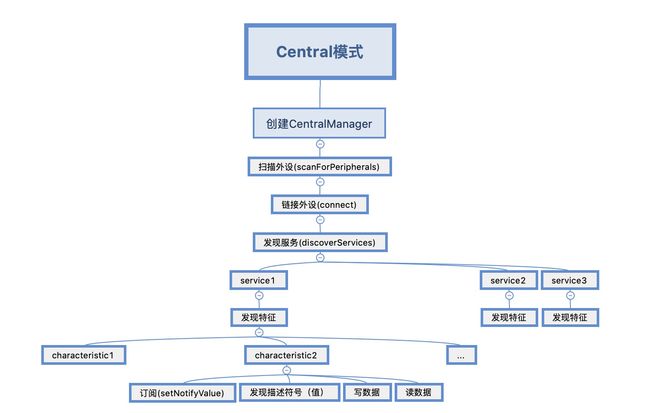- 嵌入式系统的核心组成部分处理器、存储器、传感器和执行器
getapi
单片机嵌入式硬件信号处理
处理器、存储器、传感器和执行器是嵌入式系统的核心组成部分。它们共同协作,完成从数据采集到处理再到执行的完整流程。以下是对这些组件的详细解析:1.处理器(Processor)定义处理器是嵌入式系统的大脑,负责执行指令、处理数据和控制其他组件。主要功能执行程序代码。控制外设(如存储器、传感器、执行器)。处理数据输入和输出。分类微控制器(MCU)集成了处理器核心、存储器和外设的单芯片解决方案。适合低成本
- Roblox 开源 AI 3D 生成模型,游戏开发迎来智能化变革
Yvette-W
IT职业圈人工智能3d游戏
如果说过去的3D游戏开发需要建模师一笔一划地雕刻细节,如今AI的加入正在彻底改变这一模式。Roblox最新发布的3D生成AI模型——Cube,允许开发者用简单的文本指令,快速生成3D物体。更重要的是,Roblox还开放了Cube的开源版本,这意味着不仅Roblox开发者,任何游戏开发团队甚至个人创作者,都可以利用这项技术来提升创作效率。这一突破不仅能让游戏开发变得更快、更简单,也让AI在3D生成领
- 25. 策略模式
智想天开
设计模式详解策略模式bash开发语言
原文地址:策略模式更多内容请关注:智想天开1.策略模式简介策略模式(StrategyPattern)是一种行为型设计模式,它定义了一系列算法,将每一个算法封装起来,并使它们可以相互替换。策略模式让算法的变化独立于使用算法的客户。通过引入策略模式,可以在不修改客户端代码的情况下,动态地更改对象的行为。关键点:算法封装:将不同的算法封装到独立的策略类中。互换性:策略类可以相互替换,客户端可以根据需要选
- 奇迹科技:蓝牙网关赋能少儿篮球教育的创新融合案例研究
Ms_lan
蓝牙网关北京桂花网智慧体育
一、引言本文研究了福建奇迹运动体育科技有限公司(简称‘奇迹科技’)如何利用其创新产品体系和桂花网蓝牙网关M1500,与少儿篮球教育实现深度融合。重点分析其在提升教学效果、保障训练安全、优化个性化教学等方面的实践与成效,为教育机构和从业者提供参考。二、企业背景奇迹科技由国资上市企业浙数集团与福建省互联网十强企业来玩互娱联合注资成立,专注于数字化体育产业,业务包括数字体育科技研发、打造并运营少儿科技篮
- Java单例设计模式(懒汉式和饿汉式)
俺是凡人很好
java设计模式开发语言
一、什么是单例设计模式概念:java中单例模式是一种常见的设计模式,单例模式的写法有好几种,这里主要介绍俩种:懒汉式单例、饿汉式单例。单例模式有以下特点:1、单例类只能有一个实例。2、单例类必须自己创建自己的唯一实例。3、单例类必须给所有其他对象提供这一实例。单例模式确保某个类只有一个实例,而且自行实例化并向整个系统提供这个实例。在计算机系统中,线程池、缓存、日志对象、对话框、打印机、显卡的驱动程
- 从零开始学习 Go 语言
九班长
Golang学习golang后端开发语言gin
Go语言(又称Golang)是由Google开发的一种静态强类型、编译型、并发型编程语言。它以其简洁的语法、高效的并发支持和强大的标准库而闻名,非常适合开发高性能的服务器端应用、分布式系统和云计算工具。本文将从零开始,详细介绍如何学习Go语言,涵盖基础语法、核心概念、并发编程、工具链和实战项目等内容。1.Go语言简介1.1Go语言的特点简洁易学:语法简洁,学习曲线平缓。高效编译:编译速度快,生成的
- 深度学习篇---对角矩阵&矩阵的秩&奇异矩阵
Ronin-Lotus
程序代码篇深度学习篇深度学习矩阵人工智能线性代数
文章目录前言一、对角矩阵(DiagonalMatrix)1.1定义1.2特性行列式运算简化1.3应用领域深度学习信号处理量子力学经济学二、矩阵的秩(RankofaMatrix)2.1定义2.2特性满秩降秩影响2.3应用领域深度学习图像压缩推荐系统控制理论三、奇异矩阵(SingularMatrix)3.1定义3.2特性秩不足行列式为零3.3应用领域深度学习正则化损失函数结构工程统计学数值计算四、跨领
- 龙芯架构适配:Qt 5.15.2 QWebEngine源码包推荐
曹勇宁
龙芯架构适配:Qt5.15.2QWebEngine源码包推荐【下载地址】Qt5.15.2QWebEngine适配龙芯LoongArch架构源码包本仓库提供了一个针对龙芯(LoongArch)架构的Qt5.15.2QWebEngine源码包,适用于UOS系统。由于标准的QWebEngine源码不支持LoongArch架构,因此需要进行适配才能在该架构的UOS系统上进行编译项目地址:https://g
- 使用 libevent 构建高性能网络应用
ScilogyHunter
常见软件库libevent事件驱动软件库
使用libevent构建高性能网络应用在现代网络编程中,高性能和可扩展性是开发者追求的核心目标。为了实现这一目标,许多开发者选择使用事件驱动库来管理I/O操作和事件处理。libevent是一个轻量级、高性能的事件通知库,广泛应用于网络服务器、代理、缓存等场景。本文将详细介绍libevent的核心概念、使用方法以及如何利用它构建高性能的网络应用。1.什么是libevent?libevent是一个用C
- 软件架构设计关键点:平衡高可用、性能、扩展性及成本的系统化实践
yinhezhanshen
程序人生系统架构
在数字化转型的浪潮中,软件系统已成为企业运营的核心支撑。从电商平台的秒杀活动到金融系统的实时交易,从物联网设备的百万级连接到政务服务的全天候响应,软件架构的设计质量直接决定了系统能否在复杂环境中稳定运行。本文将从高可用性、高性能、可扩展性、安全性、成本控制、规模承载和弹性伸缩七个维度,剖析现代软件架构设计的核心要点。一、高可用性:构建业务连续性的基石冗余设计:采用主从复制、多活数据中心架构(如
- Temu跨境新风口:2025年开店必知的账号安全指南
香菜9527
安全
近年来,Temu凭借其强大的供货链体系与超低价策略,成为跨境电商行业的新风口,吸引众多卖家入驻。随着平台竞争加剧,账号安全问题逐渐成为卖家面临的核心挑战。账号被封、资金冻结、违规操作等问题频发,轻则影响销量,重则导致店铺损失惨重。因此,了解并遵循安全运营规则,是每位卖家成功的关键。本文将为你详细解析Temu开店过程中必须掌握的账号安全知识,并提供实操建议,助你稳健运营。1.Temu账号安全为何重要
- Gradle 打包调试终极指南:全维度日志输出与问题定位
有时很滑稽
Androidandroid
Gradle打包调试终极指南:全维度日志输出与问题定位一、Gradle日志级别全解析1.1日志级别控制参数#按日志详细程度递增排序:./gradlewassembleDebug-q#QUIET-仅错误信息./gradlewassembleDebug#LIFECYCLE-默认级别(任务执行概览)./gradlewassembleDebug-i#INFO-显示任务输入/输出变化./gradlewass
- SQLAlchemy 的内存消耗
ftpeak
DBPython数据库pythonsql
为何要研究SQLAlchemy的内存消耗问题?因为SQLAlchemy在应用中,绝大多数问题体现在应用人员对SQLAlchemy的内存消耗问题不认知、不重视、不处理,最终造成整个系统的大问题,使SQLAlchemy的性能大打折扣,最终影响了SQLAlchemy的在您手中的可用性。通过以下解决问题的手法,可以有效控制SQLAlchemy的内存消耗,提高应用程序的性能和稳定性。1.连接池相关内存消耗原
- sql2019安装重启计算机失败,SQL SERVER 2019安装失败
小蛋子儿哦
Detailedresults:Feature:全文和语义提取搜索Status:失败Reasonforfailure:该功能的某个依赖项出错,导致该功能的安装过程失败。NextStep:使用以下信息解决错误,卸载此功能,然后再次运行安装过程。Componentname:SQLServer数据库引擎服务实例功能Componenterrorcode:0x80004005Errordescription
- matlab两矩阵相似性,两个矩阵同时相似对角化MATLAB程序.docx
weixin_39870664
matlab两矩阵相似性
两个矩阵同时相似对角化MATLAB程序摘要:使用Matlab语言设计出实现两个复矩阵同时相似对角化的计算机程序。关键词:同时相似对角化;Matlab;程序矩阵对角化是重要的数学方法,但因其计算过程繁琐,人们往往望之生畏,尤其是多个矩阵同时对角化问题,因此本文设计出判断及计算两个复矩阵能否同时相似对角化的Matlab程序,用此能够方便地解决两个复矩阵同时相似对角化问题。1.理论基础定义[1]:设A、
- 如何把master迁出的bug修改分支,合并、删除本地、删除远端
软考真题app
bug
要将fix/xxxxxx_20250319分支合并到master并删除本地及远程分支,请按以下步骤操作:1.切换到master分支并更新gitcheckoutmaster#切换到master分支gitpulloriginmaster#拉取远程master的最新代码2.合并分支到mastergitmergefix/xxxxxx_20250319#将fix/xxxxxx_20250319合并到当前分支
- Windows Docker Desktop 无法启动报错 Docker Desktop is shutting down 的可能解决办法
Bruce-li__
Dockerdocker容器运维
直接把整个AppData\Roaming\Docker目录删了,然后立刻就好了……这里还有一些其他的解决方案,Docker社区论坛也供参考:检查一下daemon.json配置文件是否有问题https://forums.docker.com/t/solved-docker-failed-to-start-docker-desktop-for-windows/106976
- YOLOV11|YOLO12改进系列指南
魔鬼面具
YOLO
基于Ultralytics的YOLO11|YOLO12改进目前自带的一些改进方案(持续更新)为了感谢各位对本项目的支持,本项目的赠品是yolov5-PAGCP通道剪枝算法.具体使用教程专栏改进汇总YOLO11系列二次创新系列ultralytics/cfg/models/11/yolo11-RevCol.yaml使用(ICLR2023)ReversibleColumnNetworks对yolo11主
- 记一次SQLServer2019安装和卸载问题的解决过程
JKRaks
数据库sqlserver
记一次SQLServer2019安装和卸载问题的解决过程Title.内容介绍0.起因1.卸载出现问题2.尝试直接安装尝试解决3.直接搞不了要不看看修复下头铁继续整注册表4.再次尝试安装累了,想重装了5.针对Couldnotopenkey找找找Answer.自己总结出来的解决步骤Title.内容介绍个人之前遇到的SQLServer因为卸载的时候出现的某些问题导致没有卸载完,然后在后来安装的时候的有些
- Android Compose 框架基本状态管理(mutableStateOf、State 接口)深入剖析(十四)
&有梦想的咸鱼&
android
AndroidCompose框架基本状态管理(mutableStateOf、State接口)深入剖析一、引言在Android开发的历史长河中,UI开发模式经历了从传统的XML布局到动态视图操作,再到如今声明式UI框架的转变。AndroidCompose作为Google推出的新一代声明式UI工具包,为开发者带来了全新的UI开发体验。其中,状态管理是Compose框架的核心概念之一,它决定了UI如何根
- FreeRTOS从入门到实战精通指南(一)
niuTaylor
RTOS学习与实战单片机嵌入式硬件RTOSFREERTOS
FreeRTOS从入门到实战精通指南一、核心知识体系搭建1.FreeRTOS架构全景图硬件层FreeRTOS内核核心模块任务管理内存管理通信机制队列信号量事件组中断管理调度器二、关键概念深度解析1.抢占式调度vs中断特性抢占式调度中断触发机制软件触发(调度器决策)硬件触发(外设请求)响应速度微秒级(依赖任务切换时间)纳秒级(硬件直接响应)执行上下文任务上下文中断上下文典型应用场景任务优先级管理硬件
- Spring的JavaWeb三层架构
可问 可问春风
JAVASSM框架spring架构java
Spring三层架构的核心注解及协作在Spring的JavaWeb三层架构中,通过分层注解实现职责分离和组件管理,各层(表现层、业务层、数据访问层)的协作基于组件扫描和依赖注入(DI)机制。以下是各层的核心注解及其协作关系:1.分层架构与对应注解层级职责注解关联技术表现层处理用户请求,返回响应@Controller/@RestControllerSpringMVC,RESTfulAPI业务层实现业
- Linux find 命令完全指南
可问 可问春风
Linux从新手到入门linuxchrome运维
find是Linux系统最强大的文件搜索工具,支持嵌套遍历、条件筛选、执行动作。以下通过场景分类解析核心用法,涵盖高效搜索、文件管理及高级技巧:一、基础搜索模式1.按文件名搜索(精确/模糊匹配)find/path-name"*.log"#精确匹配.log后缀(区分大小写)find/home-iname"*.TXT"#模糊匹配.txt后缀(忽略大小写)find.-name"data_[0-9].cs
- HTML5实现左右滑动数据变化
ice_junjun
HTML左右滑动
在HTML中怎么样实现左右滑动?代码附上Bootstrap实例-下拉菜单(Dropdowns)-->-->欢迎登陆页面!这是一个超大屏幕(Jumbotron)的实例。学习更多-->响应式表格布局产品付款日期状态产品123/11/2013待发货产品210/11/2013发货中产品320/10/2013待确认产品420/10/2013已退货产品123/11/2013待发货产品210/11/2013发货
- WHAM 人体3d重建部署笔记
AI算法网奇
深度学习宝典3d笔记
目录依赖项:mmpose的依赖项:demo脚本WHAM:ReconstructingWorld-groundedHumanswithAccurate3DMotion2024依赖项:pipinstallmmposemmpose的依赖项:mmcv>=2.0.0,=3.0.0,=0.4.0,<1.0.0demo脚本Youcantrywithoneexamplarvideo:pythondemo.py--
- 鸿蒙系统--搭建Ubuntu环境
ice_junjun
ubuntulinuxbash
搭建Ubuntu环境在嵌入式开发中,很多开发者习惯于使用Windows进行代码的编辑,比如使用Windows的VisualStudioCode进行OpenHarmony代码的开发。但当前阶段,大部分的开发板源码还不支持在Windows环境下进行编译,如Hi3861、Hi3516系列开发板。因此,建议使用Ubuntu的编译环境对源码进行编译。在以上的设备开发场景中,可以搭建一套Windows+Ubu
- OpenGL.error.GLError: GLError( err = 12289,
AI算法网奇
python基础python宝典pythonopengl
目录报错信息:报错代码:测试代码:报错信息:libEGLwarning:DRI2:failedtocreatedriscreenlibEGLwarning:DRI2:failedtocreatedriscreenTraceback(mostrecentcalllast):File"/shared_disk/users/lbg/project/online/NeuralLocalizerFields
- SQLAdmin 教程:安装与配置指南
俞淑瑜Sally
SQLAdmin教程:安装与配置指南sqladminSQLAlchemyAdminforFastAPIandStarlette项目地址:https://gitcode.com/gh_mirrors/sq/sqladmin1.项目目录结构及介绍在sqladmin开源项目中,主要的目录结构如下:docs:存放项目的文档资料,包括Markdown格式的说明文件。sqladmin:核心代码库,包含主要的功
- RDMA通信协议中rdma_resolve_addr函数的实现与应用
109702008
#C语言编程网络人工智能网络linux
在RDMA(远程直接内存访问)通信中,rdma_resolve_addr函数是一个关键的API,用于将目标IP地址解析为RDMA地址,从而建立RDMA连接。在InfiniBand源码包中,mlnx-ofed-kernel_4.9.orig.tar.gz和librdmacm_41mlnx1.orig.tar.gz都提供了rdma_resolve_addr函数,但它们的实现代码不同,且服务于不同的层次
- Linux内核网络设备注册与地址族协同机制深度解析
109702008
#C语言编程网络网络人工智能c语言
在Linux网络子系统中,网络设备注册与地址族(AddressFamily)的协同工作机制是构建高性能网络应用的核心基础。本文将以IPoIB(InfiniBandoverIP)驱动为例,深入解析register_netdev函数在设备注册中的作用,地址族的选择对网络通信的影响,以及如何通过自定义协议实现灵活的网络控制。一、网络设备注册机制解析1.1register_netdev的核心作用regis
- jdk tomcat 环境变量配置
Array_06
javajdktomcat
Win7 下如何配置java环境变量
1。准备jdk包,win7系统,tomcat安装包(均上网下载即可)
2。进行对jdk的安装,尽量为默认路径(但要记住啊!!以防以后配置用。。。)
3。分别配置高级环境变量。
电脑-->右击属性-->高级环境变量-->环境变量。
分别配置 :
path
&nbs
- Spring调SDK包报java.lang.NoSuchFieldError错误
bijian1013
javaspring
在工作中调另一个系统的SDK包,出现如下java.lang.NoSuchFieldError错误。
org.springframework.web.util.NestedServletException: Handler processing failed; nested exception is java.l
- LeetCode[位运算] - #136 数组中的单一数
Cwind
java题解位运算LeetCodeAlgorithm
原题链接:#136 Single Number
要求:
给定一个整型数组,其中除了一个元素之外,每个元素都出现两次。找出这个元素
注意:算法的时间复杂度应为O(n),最好不使用额外的内存空间
难度:中等
分析:
题目限定了线性的时间复杂度,同时不使用额外的空间,即要求只遍历数组一遍得出结果。由于异或运算 n XOR n = 0, n XOR 0 = n,故将数组中的每个元素进
- qq登陆界面开发
15700786134
qq
今天我们来开发一个qq登陆界面,首先写一个界面程序,一个界面首先是一个Frame对象,即是一个窗体。然后在这个窗体上放置其他组件。代码如下:
public class First { public void initul(){ jf=ne
- Linux的程序包管理器RPM
被触发
linux
在早期我们使用源代码的方式来安装软件时,都需要先把源程序代码编译成可执行的二进制安装程序,然后进行安装。这就意味着每次安装软件都需要经过预处理-->编译-->汇编-->链接-->生成安装文件--> 安装,这个复杂而艰辛的过程。为简化安装步骤,便于广大用户的安装部署程序,程序提供商就在特定的系统上面编译好相关程序的安装文件并进行打包,提供给大家下载,我们只需要根据自己的
- socket通信遇到EOFException
肆无忌惮_
EOFException
java.io.EOFException
at java.io.ObjectInputStream$PeekInputStream.readFully(ObjectInputStream.java:2281)
at java.io.ObjectInputStream$BlockDataInputStream.readShort(ObjectInputStream.java:
- 基于spring的web项目定时操作
知了ing
javaWeb
废话不多说,直接上代码,很简单 配置一下项目启动就行
1,web.xml
<?xml version="1.0" encoding="UTF-8"?>
<web-app xmlns:xsi="http://www.w3.org/2001/XMLSchema-instance"
xmlns="h
- 树形结构的数据库表Schema设计
矮蛋蛋
schema
原文地址:
http://blog.csdn.net/MONKEY_D_MENG/article/details/6647488
程序设计过程中,我们常常用树形结构来表征某些数据的关联关系,如企业上下级部门、栏目结构、商品分类等等,通常而言,这些树状结构需要借助于数据库完成持久化。然而目前的各种基于关系的数据库,都是以二维表的形式记录存储数据信息,
- maven将jar包和源码一起打包到本地仓库
alleni123
maven
http://stackoverflow.com/questions/4031987/how-to-upload-sources-to-local-maven-repository
<project>
...
<build>
<plugins>
<plugin>
<groupI
- java IO操作 与 File 获取文件或文件夹的大小,可读,等属性!!!
百合不是茶
类 File
File是指文件和目录路径名的抽象表示形式。
1,何为文件:
标准文件(txt doc mp3...)
目录文件(文件夹)
虚拟内存文件
2,File类中有可以创建文件的 createNewFile()方法,在创建新文件的时候需要try{} catch(){}因为可能会抛出异常;也有可以判断文件是否是一个标准文件的方法isFile();这些防抖都
- Spring注入有继承关系的类(2)
bijian1013
javaspring
被注入类的父类有相应的属性,Spring可以直接注入相应的属性,如下所例:1.AClass类
package com.bijian.spring.test4;
public class AClass {
private String a;
private String b;
public String getA() {
retu
- 30岁转型期你能否成为成功人士
bijian1013
成长励志
很多人由于年轻时走了弯路,到了30岁一事无成,这样的例子大有人在。但同样也有一些人,整个职业生涯都发展得很优秀,到了30岁已经成为职场的精英阶层。由于做猎头的原因,我们接触很多30岁左右的经理人,发现他们在职业发展道路上往往有很多致命的问题。在30岁之前,他们的职业生涯表现很优秀,但从30岁到40岁这一段,很多人
- 【Velocity四】Velocity与Java互操作
bit1129
velocity
Velocity出现的目的用于简化基于MVC的web应用开发,用于替代JSP标签技术,那么Velocity如何访问Java代码.本篇继续以Velocity三http://bit1129.iteye.com/blog/2106142中的例子为基础,
POJO
package com.tom.servlets;
public
- 【Hive十一】Hive数据倾斜优化
bit1129
hive
什么是Hive数据倾斜问题
操作:join,group by,count distinct
现象:任务进度长时间维持在99%(或100%),查看任务监控页面,发现只有少量(1个或几个)reduce子任务未完成;查看未完成的子任务,可以看到本地读写数据量积累非常大,通常超过10GB可以认定为发生数据倾斜。
原因:key分布不均匀
倾斜度衡量:平均记录数超过50w且
- 在nginx中集成lua脚本:添加自定义Http头,封IP等
ronin47
nginx lua csrf
Lua是一个可以嵌入到Nginx配置文件中的动态脚本语言,从而可以在Nginx请求处理的任何阶段执行各种Lua代码。刚开始我们只是用Lua 把请求路由到后端服务器,但是它对我们架构的作用超出了我们的预期。下面就讲讲我们所做的工作。 强制搜索引擎只索引mixlr.com
Google把子域名当作完全独立的网站,我们不希望爬虫抓取子域名的页面,降低我们的Page rank。
location /{
- java-3.求子数组的最大和
bylijinnan
java
package beautyOfCoding;
public class MaxSubArraySum {
/**
* 3.求子数组的最大和
题目描述:
输入一个整形数组,数组里有正数也有负数。
数组中连续的一个或多个整数组成一个子数组,每个子数组都有一个和。
求所有子数组的和的最大值。要求时间复杂度为O(n)。
例如输入的数组为1, -2, 3, 10, -4,
- Netty源码学习-FileRegion
bylijinnan
javanetty
今天看org.jboss.netty.example.http.file.HttpStaticFileServerHandler.java
可以直接往channel里面写入一个FileRegion对象,而不需要相应的encoder:
//pipeline(没有诸如“FileRegionEncoder”的handler):
public ChannelPipeline ge
- 使用ZeroClipboard解决跨浏览器复制到剪贴板的问题
cngolon
跨浏览器复制到粘贴板Zero Clipboard
Zero Clipboard的实现原理
Zero Clipboard 利用透明的Flash让其漂浮在复制按钮之上,这样其实点击的不是按钮而是 Flash ,这样将需要的内容传入Flash,再通过Flash的复制功能把传入的内容复制到剪贴板。
Zero Clipboard的安装方法
首先需要下载 Zero Clipboard的压缩包,解压后把文件夹中两个文件:ZeroClipboard.js
- 单例模式
cuishikuan
单例模式
第一种(懒汉,线程不安全):
public class Singleton { 2 private static Singleton instance; 3 pri
- spring+websocket的使用
dalan_123
一、spring配置文件
<?xml version="1.0" encoding="UTF-8"?><beans xmlns="http://www.springframework.org/schema/beans" xmlns:xsi="http://www.w3.or
- 细节问题:ZEROFILL的用法范围。
dcj3sjt126com
mysql
1、zerofill把月份中的一位数字比如1,2,3等加前导0
mysql> CREATE TABLE t1 (year YEAR(4), month INT(2) UNSIGNED ZEROFILL, -> day
- Android开发10——Activity的跳转与传值
dcj3sjt126com
Android开发
Activity跳转与传值,主要是通过Intent类,Intent的作用是激活组件和附带数据。
一、Activity跳转
方法一Intent intent = new Intent(A.this, B.class); startActivity(intent)
方法二Intent intent = new Intent();intent.setCla
- jdbc 得到表结构、主键
eksliang
jdbc 得到表结构、主键
转自博客:http://blog.csdn.net/ocean1010/article/details/7266042
假设有个con DatabaseMetaData dbmd = con.getMetaData(); rs = dbmd.getColumns(con.getCatalog(), schema, tableName, null); rs.getSt
- Android 应用程序开关GPS
gqdy365
android
要在应用程序中操作GPS开关需要权限:
<uses-permission android:name="android.permission.WRITE_SECURE_SETTINGS" />
但在配置文件中添加此权限之后会报错,无法再eclipse里面正常编译,怎么办?
1、方法一:将项目放到Android源码中编译;
2、方法二:网上有人说cl
- Windows上调试MapReduce
zhiquanliu
mapreduce
1.下载hadoop2x-eclipse-plugin https://github.com/winghc/hadoop2x-eclipse-plugin.git 把 hadoop2.6.0-eclipse-plugin.jar 放到eclipse plugin 目录中。 2.下载 hadoop2.6_x64_.zip http://dl.iteye.com/topics/download/d2b
- 如何看待一些知名博客推广软文的行为?
justjavac
博客
本文来自我在知乎上的一个回答:http://www.zhihu.com/question/23431810/answer/24588621
互联网上的两种典型心态:
当初求种像条狗,如今撸完嫌人丑
当初搜贴像条犬,如今读完嫌人软
你为啥感觉不舒服呢?
难道非得要作者把自己的劳动成果免费给你用,你才舒服?
就如同 Google 关闭了 Gooled Reader,那是
- sql优化总结
macroli
sql
为了是自己对sql优化有更好的原则性,在这里做一下总结,个人原则如有不对请多多指教。谢谢!
要知道一个简单的sql语句执行效率,就要有查看方式,一遍更好的进行优化。
一、简单的统计语句执行时间
declare @d datetime ---定义一个datetime的变量set @d=getdate() ---获取查询语句开始前的时间select user_id
- Linux Oracle中常遇到的一些问题及命令总结
超声波
oraclelinux
1.linux更改主机名
(1)#hostname oracledb 临时修改主机名
(2) vi /etc/sysconfig/network 修改hostname
(3) vi /etc/hosts 修改IP对应的主机名
2.linux重启oracle实例及监听的各种方法
(注意操作的顺序应该是先监听,后数据库实例)
&nbs
- hive函数大全及使用示例
superlxw1234
hadoophive函数
具体说明及示例参 见附件文档。
文档目录:
目录
一、关系运算: 4
1. 等值比较: = 4
2. 不等值比较: <> 4
3. 小于比较: < 4
4. 小于等于比较: <= 4
5. 大于比较: > 5
6. 大于等于比较: >= 5
7. 空值判断: IS NULL 5
- Spring 4.2新特性-使用@Order调整配置类加载顺序
wiselyman
spring 4
4.1 @Order
Spring 4.2 利用@Order控制配置类的加载顺序
4.2 演示
两个演示bean
package com.wisely.spring4_2.order;
public class Demo1Service {
}
package com.wisely.spring4_2.order;
public class
